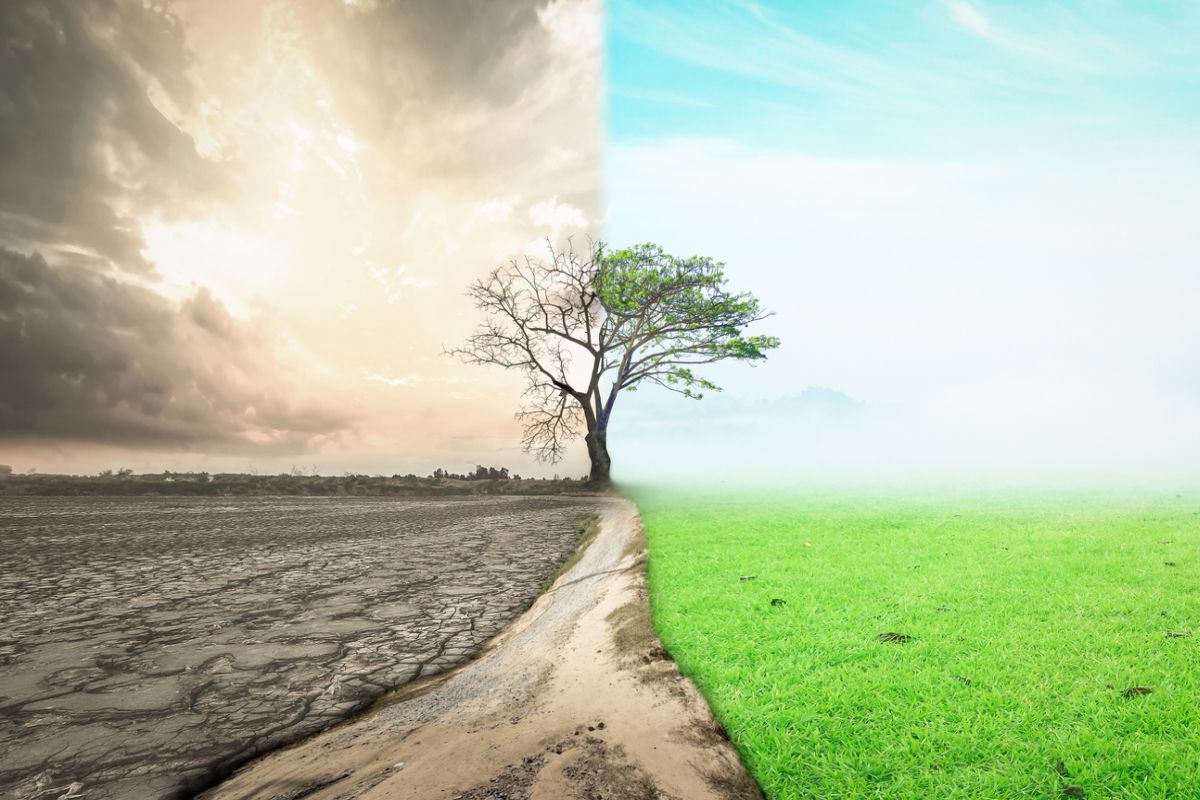The Union Cabinet chaired by the Prime Minister Shri Narendra Modi, has approved India’s updated Nationally Determined Contribution (NDC) to be communicated to the United Nations Framework Convention on Climate Change (UNFCCC).
The updated NDC seeks to enhance India’s contributions towards achievement of the strengthening of global response to the threat of climate change, as agreed under the Paris Agreement. Such action will also help India usher in low emissions growth pathways. It would protect the interests of the country and safeguard its future development needs based on the principles and provisions of the UNFCCC.
Advertisement
India at the 26th session of the Conference of the Parties (COP26) to the United Nations Framework Convention on Climate Change (UNFCCC) held in Glasgow, United Kingdom, expressed to intensify its climate action by presenting to the world five nectar elements (Panchamrit) of India’s climate action. This update to India’s existing NDC translates the ‘Panchamrit’ announced at COP 26 into enhanced climate targets. The update is also a step towards achieving India’s long term goal of reaching net-zero by 2070.
Earlier, India submitted its Intended Nationally Determined Contribution (NDC) to UNFCCC on October 2, 2015. The 2015 NDC comprised eight goals; three of these have quantitative targets upto 2030 namely, cumulative electric power installed capacity from non-fossil sources to reach 40%; reduce the emissions intensity of GDP by 33 to 35 percent compared to 2005 levels and creation of additional carbon sink of 2.5 to 3 billion tonnes of CO2 equivalent through additional forest and tree cover.
As per the updated NDC, India now stands committed to reduce Emissions Intensity of its GDP by 45 percent by 2030, from 2005 level and achieve about 50 percent cumulative electric power installed capacity from non-fossil fuel-based energy resources by 2030. Today’s approval, also takes forward the Hon’ble Prime Minister’s vision of sustainable lifestyles and climate justice to protect the poor and vulnerable from adverse impacts of climate change. The updated NDC reads “To put forward and further propagate a healthy and sustainable way of living based on traditions and values of conservation and moderation, including through a mass movement for ‘LIFE’– ‘Lifestyle for Environment’ as a key to combating climate change”. The decision on enhanced NDCs demonstrates India’s commitment at the highest level for decoupling of economic growth from greenhouse gas emissions.
India’s updated NDC has been prepared after carefully considering our national circumstances and the principle of common but differentiated responsibilities and respective capabilities (CBDR-RC). India’s updated NDC also reaffirms our commitment to work towards a low carbon emission pathway, while simultaneously endeavoring to achieve sustainable development goals.
Recognizing that lifestyle has a big role in climate change, the Hon’ble Prime Minister of India, at COP 26, proposed a ‘One-Word Movement’, to the global community. This one word is LIFE…L, I, F, E, i.e. Lifestyle For Environment. The vision of LIFE is to live a lifestyle that is in tune with our planet and does not harm it. India’s updated NDC also captures this citizen centric approach to combat climate change.
The updated NDC also represents the framework for India’s transition to cleaner energy for the period 2021-2030. The updated framework, together with many other initiatives of the Government, including tax concessions and incentives such as Production Linked Incentive scheme for promotion of manufacturing and adoption of renewable energy, will provide an opportunity for enhancing India’s manufacturing capabilities and enhancing exports. It will lead to an overall increase in green jobs such as in renewable energy, clean energy industries- in automotives, manufacturing of low emissions products like Electric Vehicles and super-efficient appliances, and innovative technologies such as green hydrogen, etc. India’s updated NDC will be implemented over the period 2021-2030 through programs and schemes of relevant Ministries /departments and with due support from States and Union Territories. The Government has launched many schemes and programs to scale up India’s actions on both adaptation and mitigation. Appropriate measures are being taken under these schemes and programs across many sectors, including water, agriculture, forest, energy and enterprise, sustainable mobility and housing, waste management, circular economy and resource efficiency, etc. As a result of the aforesaid measures, India has progressively continued decoupling of economic growth from greenhouse gas emissions. The Net Zero target by 2030 by Indian Railways alone will lead to a reduction of emissions by 60 million tonnes annually. Similarly, India’s massive LED bulb campaign is reducing emissions by 40 million tonnes annually.
India’s climate actions have so far been largely financed from domestic resources. However, providing new and additional financial resources as well as transfer of technology to address the global climate change challenge are among the commitments and responsibilities of the developed countries under UNFCCC and the Paris Agreement. India will also require its due share from such international financial resources and technological support.
India’s NDC do not bind it to any sector specific mitigation obligation or action. India’s goal is to reduce overall emission intensity and improve energy efficiency of its economy over time and at the same time protecting the vulnerable sectors of economy and segments of our society.











